BY: BRIAN SMITH, MS, MA, MDiv

The architect Louis Sullivan is credited with the maxim, "form follows function." To appreciate the full beauty and poetry behind his words, one must study the full quote, written by Sullivan in 1896:
"Whether it be the sweeping eagle in his flight, or the open apple-blossom, the toiling work-horse, the blithe swan, the branching oak, the winding stream at its base, the drifting clouds, over all the coursing sun, form ever follows function, and this is the law. Where function does not change, form does not change. The granite rocks, the ever-brooding hills, remain for ages; the lightning lives, comes into shape, and dies, in a twinkling. It is the pervading law of all things organic and inorganic, of all things physical and metaphysical, of all things human and all things superhuman, of all true manifestations of the head, of the heart, of the soul, that the life is recognizable in its expression, that form ever follows function. This is the law."1
Although this principle is usually associated with late 19th- and early 20th-century architecture and industrial design, Sullivan would say this law can be applied to anything–including human organizations. The "manifestation of the head, heart and soul" in Catholic health care, especially as it relates to the preservation and promotion of Catholic identity, has greatly changed in the last 50 years. The functions of sponsorship, governance, management and mission have greatly changed over the last five decades and so has their form. That is good, according to Sullivan. It shows Catholic health care is adapting, changing and alive!
This article focuses on one particular aspect of Catholic health care that has been evolving for almost 50 years — mission integration. "Mission integration is the sum of the processes, programs, and relationships that serve to enhance our understanding and commitment to the tradition and values from which the healing ministry originated and in which it continues. It is more than programs and celebrations; it is the work of the soul. It translates into day-to-day language and struggles with complex issues and brings light to significant decisions."2
The form of mission integration has greatly changed through the decades. The position of mission leader has grown in prominence and influence. Competency models continue to change to express the increasing functions and responsibilities associated with the role. This article weaves together the historical highlights of mission integration, with the shifts in function and form in Catholic health care, so the reader will see how mission has always adapted to serve the needs of the ministry.
EARLY BEGINNINGS — MID 1970s
The role of the mission leader in Catholic health care in the United States was created in the mid-1970s. The process began when sponsoring congregations had fewer members to send into Catholic hospitals as nurses and administrators. They assigned women religious to leadership positions at the system headquarters under a title we now refer to as "mission services," although the title then varied from system to system.
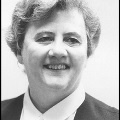 CHA's archives indicate the first reference to this role was in 1976. The Sisters of Mercy Health Corp. system in Farmington Hills, Michigan, started a department of ministerial development. It was led by Sr. Concilia Moran, RSM. Other systems soon followed with their own version of mission departments including Holy Cross Health System's office of apostolic development in Indiana and the philosophy department of Mercy Health System, Burlingame, California.3
CHA's archives indicate the first reference to this role was in 1976. The Sisters of Mercy Health Corp. system in Farmington Hills, Michigan, started a department of ministerial development. It was led by Sr. Concilia Moran, RSM. Other systems soon followed with their own version of mission departments including Holy Cross Health System's office of apostolic development in Indiana and the philosophy department of Mercy Health System, Burlingame, California.3
The early system mission leader's primary role was to keep the connection between the church and the ministry alive and to develop a structure for identifying and training mission leaders for the member facilities. "Mission leader positions were sometimes held by sisters experienced in health care, but frequently one of the congregation's educators or even former member of its leadership team took the job."4
"The early mission leaders usually had to define, as well as legitimize her own position in the organization."5 The skill set varied from leader to leader with some having backgrounds in theology, formation, pastoral care and spirituality and others with clinical and administration backgrounds. As a result, there was great variation in job descriptions, functional responsibilities and salaries. Accountability varied across the systems. In some cases, the mission leader was appointed by and reported to the sponsoring congregation; in other cases, the leaders were appointed by the congregation and reported to the congregation and the corporation's CEO, while still others were appointed by the congregation and reported solely to the CEO.
CHA SHIFTS ITS FOCUS: 1973–1987
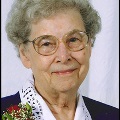 Meanwhile, CHA recognized the health care environment was rapidly changing and new member needs were emerging, especially in the area of sponsorship. In 1970, the Board of Trustees of CHA appointed Sr. Mary Maurita Sengelaub, RSM, as chief executive director. By far the most significant development during her administration was the work of the CHA Study Committee which began in 1973.6 It addressed CHA's long-term needs, and in 1975 a committee for long-range planning was formed.
Meanwhile, CHA recognized the health care environment was rapidly changing and new member needs were emerging, especially in the area of sponsorship. In 1970, the Board of Trustees of CHA appointed Sr. Mary Maurita Sengelaub, RSM, as chief executive director. By far the most significant development during her administration was the work of the CHA Study Committee which began in 1973.6 It addressed CHA's long-term needs, and in 1975 a committee for long-range planning was formed.
In early 1976, the Long-Range Planning and Development Committee commissioned the consulting firm of Arthur D. Little to determine how well members' expectations and needs were being fulfilled by CHA. In September 1977, the consulting firm made 30 recommendations. Some of the most notable recommendations that were implemented over the next three years included:
- Expediting the movement toward a more dynamic and responsive CHA with a major leadership role in the health ministry of the church
- Giving CHA a more Catholic and ecclesial orientation
- Having CHA's central mission to focus on education and advocacy as its primary functions
- Placing less emphasis on the technical aspects of health services (for instance, eliminating CHA's dietary, X-ray and housekeeping departments, which at the time collected and shared related best practices) that duplicate the work of other associations and are unrelated to CHA's mission
- Developing alternatives for sponsorship, with an emphasis on building systems (the formation of larger health care systems required sponsors to think more strategically and as a system)
- Encouraging initiatives to establish and strengthen relationships with appropriate church-related and other national and regional organizations by building formal and informal communications networks and relationships
- Taking the initiative for developing guidelines and criteria for a self-evaluation process that members may use in assessing their apostolic effectiveness
- Changing CHA's name from the Catholic Hospital Association to the Catholic Health Association of the United States
- Strengthening the association's advocacy and government efforts and opening an office in Washington, D.C.7
With this new focus, CHA restructured and created the mission services department in 1980, hiring Sr. Margaret John Kelly, DC, PhD, as its first vice president of mission services. The department grew and developed in the early 1980s and included staff responsible for mission, sponsorship, theology and ethics, church relations and pastoral care.
In 1980, CHA published the Evaluative Criteria for Catholic Health Care Facilities, to enable members to evaluate their mission effectiveness. In 1987, a new CHA publication, The Dynamics of Catholic Identity in Healthcare: A Working Document subsumed the Evaluative Criteria as an instrument for assessing and enhancing a health care facility's Catholic identity. It was written primarily by Laurence J. O'Connell, STD, PhD, then CHA's vice president, Division of Theology, Mission and Ethics.8
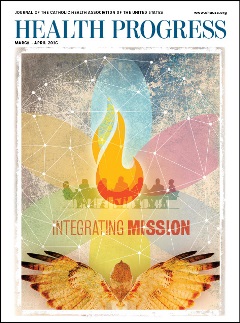 EVOLUTION OF THE MISSION LEADER ROLE: 1980–1995
EVOLUTION OF THE MISSION LEADER ROLE: 1980–1995
In the early 1980s, the mission leader's responsibilities and roles were often unclear and as a result, some mission leaders lacked legitimacy in their organizations. Those without health care experience reported feeling marginalized and relegated to leading prayer at meetings, organizing retreats and overseeing charity drives. This early phase was labelled the "Mascot" period by Mary Kathryn Grant, PhD, Holy Cross Health System's vice president of sponsorship and mission services. The mission leader was viewed as a cheerleader, reminder or symbol that the sponsors were trying to ensure a connection between themselves and the organization. In reality, mission leaders were rarely able to influence strategy, operations, budgets or decision-making processes. Some reported their CEOs felt threatened because they saw themselves as the primary mission leader; while others experienced resentment during times of staff reduction because the mission leader position, usually held by a woman religious, was secure.9
As systems were coming together in the late 1980s and early 1990s, new mission statements and core values were developed by sponsors, and mission services departments were expected to help educate staff on how to live the mission and values. This second phase Grant referred to as the "Mentor" period. Mission began to be seen as something everyone in the organization was responsible for. The mission leader provided mission education and formation to help staff see how their work contributed to the mission and how they could live the organization's values through their behaviors. This meant mission services and human resources began to work closely together. At times this was expressed by human resources reporting to mission services and vice versa. Sometimes this led to tension between the two departments as both sought resources to shape organizational culture and provide the educational and formational programs needed for leaders and others working in the ministry.
By the mid-1990s, system competency models for executives, including mission leaders, began to emerge. System mission departments were trying to elevate the role of the facility mission leader so they would become part of the senior leadership team and participate in strategic planning and decision making. Grant called this third phase in the evolution of the mission leader role, "Mainstream."10 While these early mission leader competency models showed some variability, they all concurred that mission leaders needed to have "pastoral" qualities like compassion, approachability and the ability to listen; as well as business savvy and organizational skills.
CHA had been hosting an annual forum for system mission leaders since the mid-1980s to share learnings and find solutions to common challenges. By the early 1990s, one theme that emerged from these forums was the need for a common set of mission leader competencies and a way for mission leaders to grow in order for the profession to develop, become relevant and truly "mainstream."
EMERGENCE OF SENIOR LEADERSHIP AND MISSION LEADER COMPETENCY MODELS
It is important to know that during the time the ministry was discussing a set of mission leader competencies, CHA was simultaneously working on a general senior leadership competency model. In 1992, the Center for Leadership Excellence of CHA began and initiated a project in 1993 with the Center for Applied Social Research of DePaul University in Chicago and Hay McBer in Boston to conduct a large-scale competency research effort. The research methodology included 1,200 CHA members nominating leaders they felt exhibited the leadership skills and competencies necessary for carrying the ministry forward. From those nominated, the top 10% (60 individuals) were interviewed and given leadership tests. The resulting study, Transformational Leadership for the Healing Ministry: Competencies for the Future, provided a unique framework for identifying and fostering the qualities that define excellence in health care. The research found Spirituality, Professional Expertise and Integration and Action are the key components of leader competencies necessary to preserve the Catholic healing tradition.
The most revealing finding in the research was that the majority of competencies that drive superior performance in executives are rooted in the "Spirituality Cluster." That is the presence of a personal, integrated spirituality which is comprised of three elements: 1) positive affiliation or concern for relationships, 2) faith in God and 3) finds meaning through reflection.11
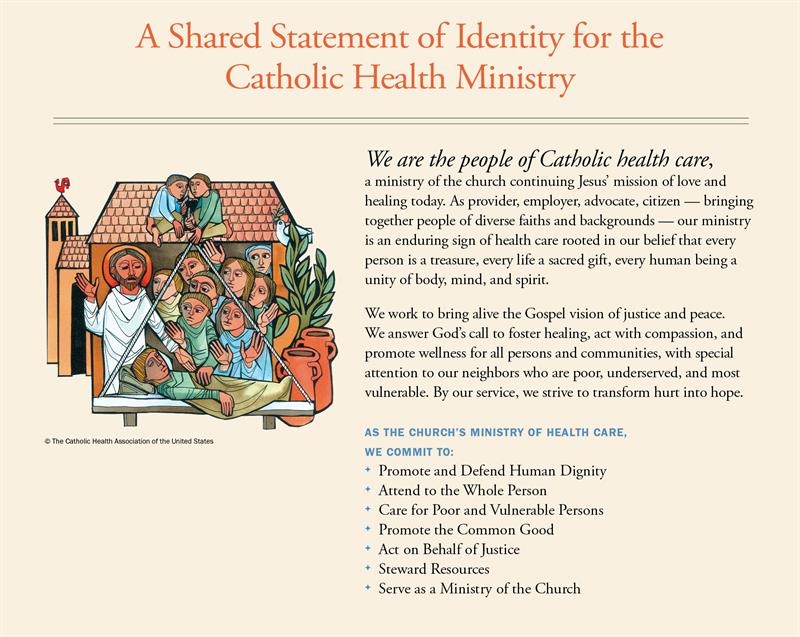
The Mission Services department of CHA conducted the first survey of all known mission leaders (approximately 100 people) within the ministry in 1993. Because the profession was so new at this point, the purpose of this non-scientific survey was to simply gain demographic information on who was filling these positions and what professional development they could use to further their development. The survey revealed that 66% of the respondents had been a mission leader less than two years and 78% had never worked in a health care organization prior to becoming a mission leader. Only 12% were lay persons. The majority of respondents indicated that a background in theology, ethics, spirituality and ministry would be the best way to professionally prepare for the role of mission leader.
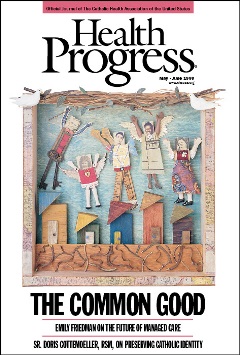 In 1999, CHA published its first mission leader competency model. These competencies were primarily designed for academic institutions to develop courses and programs that would help educate and form mission leaders to have the desired knowledge base and necessary personal qualities. The CHA Mission Leader Competency model assumed that the formation of the mission leader would include theological, spiritual, ethical and social knowledge as well as practical understanding of the operations and dynamics of health care organizations, as well as life-long learning to respond to changing needs in the ministry.12
In 1999, CHA published its first mission leader competency model. These competencies were primarily designed for academic institutions to develop courses and programs that would help educate and form mission leaders to have the desired knowledge base and necessary personal qualities. The CHA Mission Leader Competency model assumed that the formation of the mission leader would include theological, spiritual, ethical and social knowledge as well as practical understanding of the operations and dynamics of health care organizations, as well as life-long learning to respond to changing needs in the ministry.12
COMPETENCY DEVELOPMENT PROGRAMS FOR MISSION LEADER
CHA started an in-person workshop for new mission leaders named Prophetic Voice in 1998, later renamed in 2016 to Essentials for Leading Mission in Catholic Health Care. In addition, CHA began to offer bi-annual mission leader seminars beginning in 2003, aimed at competency and skill development for entry and mid-level mission leaders.
In 2006, the Aquinas Institute of Theology sought to expand its academic programs to include offerings in health care mission. The Ashley-O'Rourke Center for Health Ministry Leadership (named for theologian Fr. Benedict Ashley, OP, and ethicist Fr. Kevin O'Rourke, OP) was created to provide educational and formational programs for those who are leading health care mission. Offering both an Executive Master of Arts in Health Care Mission and a Certificate in Mission Leadership, the Aquinas Institute has collaborated closely with CHA to ensure their offerings parallel with the current CHA mission leader competency model.
The Neiswanger Institute for Bioethics and Healthcare Leadership at Loyola University Chicago, began a master's program in health care mission in 2012 and also offers a certificate in health care mission. The university, which also closely collaborated with CHA, will offer the first PhD program in mission leadership beginning in the fall of 2020.
A SHARED STATEMENT OF IDENTITY
Sr. Doris Gottemoeller, RSM, PhD, president of the Sisters of Mercy of the Americas and chair of the CHA Board of Trustees at the time, helped steer the ministry to name what constitutes Catholic identity in Catholic health care. Writing in Health Progress in 1999, Sr. Gottemoeller acknowledged this was a difficult task but strongly laid out the case for why this was necessary: "Why is the question of Catholic identity so difficult to address? We all agree that Catholic identity involves concern for the poor, adherence to the Ethical and Religious Directives, recognition by the church, and the other characteristics I've mentioned. But the topic remains painful, confusing, and even divisive because of our respect for pluralism of beliefs and legitimate diversity; because of what sometimes seem like arbitrary and inconsistent exercises of church authority; and because of the difficulty of quantifying and measuring adherence to ideals." She proposed fundamental characteristics. …" To be effective, they will have to be enacted and interpreted by real people in real situations within the context of the entire Christian community. Doing so will never be easy, neat, or without controversy. But the struggle itself can be productive."13
In 2000, the membership of CHA voted and approved a new Shared Statement of Identity for the Catholic Health Ministry and listed seven core commitments recognizing that formation of the ministry's leaders would be necessary to succeed, an updated version of the shared statement is still in use today.14
2006 CHA MISSION LEADER SURVEY
Knowing the number of mission leaders had greatly increased since 1993, CHA launched its second mission leader survey in 2006. This survey was sent electronically to approximately 700 mission leaders with over 50% responding.
A comparison of responses between the 2006 and 1993 mission leader surveys showed tremendous advances in the field. More people were serving as mission leaders throughout the ministry. An additional 600 mission leader positions had been added to the ministry over 13 years at both the vice president and director levels. In addition, they were now serving across the continuum of care (acute, non-acute, long-term care and managed care offices). The percentage of religious to lay mission leaders was now 64% to 36%. Responsibilities, salaries and benefits for mission leaders had increased and now were closer, though not yet on par, to the salary and benefits of other senior leaders.15
Thirty years into the profession, it was becoming clear there were three distinct pathways by which people were coming to the mission leader field. The first pathway by which the majority of mission leaders, then and now, enter the field is the "external" model. These were women and men who come to health care leadership as a second or third career, bringing their excellent educational and leadership backgrounds. They eagerly embrace the health care learning curve by entering graduate studies, internships or mentoring programs.16
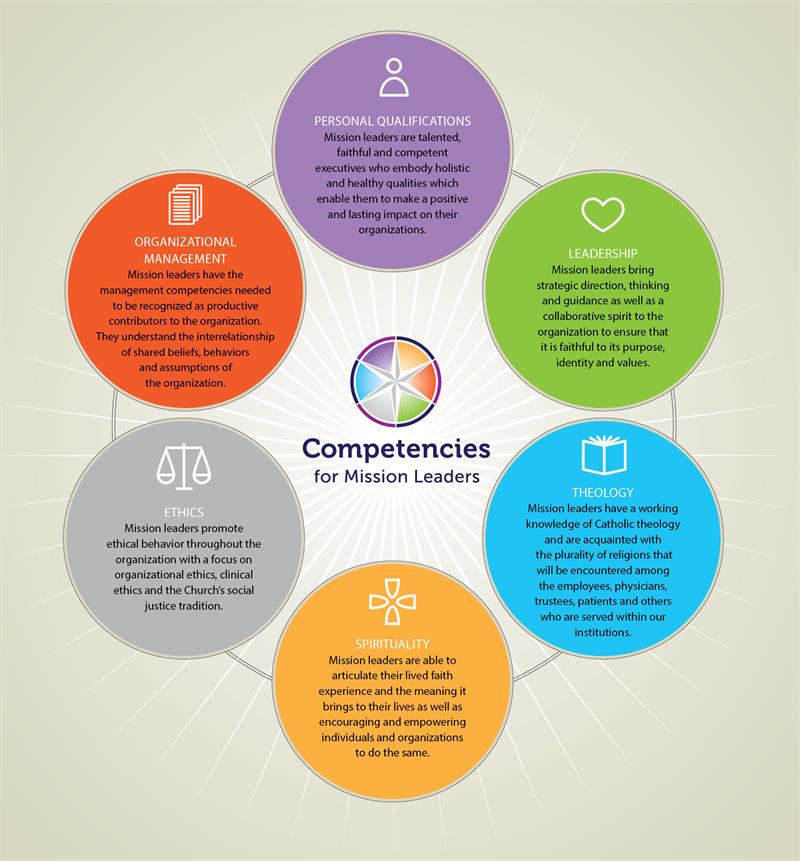
The second pathway, the "internal" model, was taken by women and men already in health care, sometimes clinicians, chaplains, patient advocates or community activists. Often these are individuals in whom administrators recognize key characteristics that seem to naturally fit them for mission leadership. The learning curve for these persons is in theology and ministry, and many of them have entered graduate programs to complement other skills.17
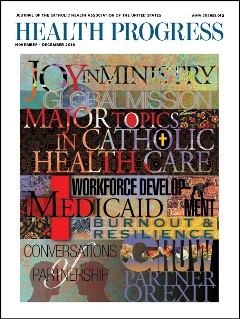 The third model weds the "external" and "internal" models. Some system mission leaders appeal directly to young people currently enrolled in ministry programs in Catholic universities and schools of theology and bioethics. To help them consider health care mission as a career path, internships and fellowships are created to help them transition from the theoretical to the practical.
The third model weds the "external" and "internal" models. Some system mission leaders appeal directly to young people currently enrolled in ministry programs in Catholic universities and schools of theology and bioethics. To help them consider health care mission as a career path, internships and fellowships are created to help them transition from the theoretical to the practical.
2009 CHA MISSION LEADER COMPETENCY MODEL
Remembering Sullivan's maxim, "form follows function," it was no surprise with the huge influx of new mission leaders and new expectations for the role, the CHA Mission Leader Competency Model needed to be revisited. There were now clear areas of responsibility that mission leaders were overseeing: mission integration, church relations, ethics, pastoral care, spirituality and community benefit.
Working with The Reid Group of Seattle, CHA engaged the ministry in a series of online surveys, focus groups and personal interviews with over 200 key senior leaders to understand the challenges, needs and hopes of sponsors, CEOs and other stakeholders.
The 2009 CHA Mission Leader Competency Model begins with Personal Qualifications which includes being well formed in the Catholic tradition and a person of faith who is committed to and models the mission and values of the organization. The second competency, Leadership, calls out the ability to bring strategic direction and guidance in a collaborative spirit to ensure the organization is faithful to its purpose, identity and values. Theology (pastoral, ecclesial and canon law) is the third competency; followed by Spirituality (personal, communal and change). The fifth competency, Ethics, includes promotion of organizational and clinical ethics as well as justice. Finally, Organizational Management includes the necessary management competencies of communication, collaboration, business acumen and human relationship skills.
LEADERSHIP FORMATION AND MINISTRY IDENTITY
Reflecting on her 15 years at CHA, first as senior director of theology and ethics (2000-2003) and then as vice president, sponsorship and mission services (2003–2015), Sr. Patricia Talone, RSM, PhD, stated that from 2000–2015, "the highlights for mission integration was the increased professionalism for the role of mission and the growth and development of formation programs for health care executives and sponsors."18 The simultaneous professionalization of the mission leader role and the development of formation programs can not be underestimated.
The first formation programs began in the early 1990s and were primarily developed for executive leaders (sponsors, governance and C-suite executives) by system mission leaders. Programs for new and mid-level leaders like Foundations of Catholic Health Care Leadership, followed in the late 1990s and were primarily facilitated by system and regional mission leaders. This two to three-day program, intended for all leaders new to leadership in Catholic health care, has been replicated and adapted by other systems over the past 20 years. It has become the gold-standard for new leaders who are beginning ministry formation.
Under the guidance of Brian Yanofchick, CHA's senior director, mission integration and leadership development at the time, the ministry came to consensus on a Framework for Senior Leadership Formation, published in 2011 which gives a common description of ministry formation and names the ten core content areas for senior leadership formation.19 One of the "next steps" articulated in the Framework was to establish effective assessment frameworks that measure the impact of formation on individual leaders and the organizations they serve.
Mission leaders began to realize the best metric to demonstrate the effectiveness of the formation process is by measuring the strength of the organization's ministry identity. The ministry's adoption of A Shared Statement of Catholic Identity for the Catholic Health Ministry in 2000, prompted the creation of more rigorous ministry identity assessment tools including: the Catholic Identity Matrix (2005), which is the collaborative work of Ascension Health, St. Louis, and the Veritas Institute at the University of St. Thomas in Minneapolis, Minnesota; a tool called produced in 2012 by CHAN Healthcare, St. Louis, and Dignity Health; the Promoting Catholic Identity appraisal (2104) developed by Trinity Health,20 and Ministry Identity Assessment (2019). The mission leader of an organization typically oversees their ministry identity assessment process and corresponding quality improvement plan.
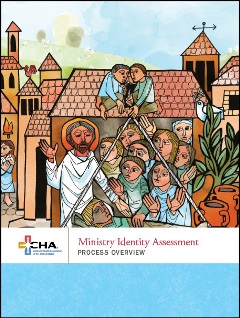 2013 MISSION LEADER SURVEY
2013 MISSION LEADER SURVEY
The 2013 Mission Leader Survey was designed by Brian Smith and Sr. Talone of CHA's Mission Services Department in collaboration with The Reid Group. The CHA Mission Advisory Committee gave feedback and piloted the survey tool before it was sent to 702 mission leaders and returned by 50% of them.21
About 70% of the respondents were female, 62% of whom were between the ages of 55 and 65. The vast majority (93%) of the mission leaders returning the survey were white/Caucasian. One noticeable demographic shift between 2006 and 2013 was the percentage of mission leader roles filled by religious sisters, brothers and clergy compared to lay women and men. The survey showed the majority of mission leaders, 55%, were lay and 45% were religious or clergy. Approximately 87% of those responding noted they were Roman Catholic, down from 94% in 2013.22
The largest number of respondents were between ages 55-65. Thirty percent of the mission leaders surveyed planned to retire by 2017 and 60% of them plan not to be working by 2022.23 This telling piece of information resulted in an all-out effort by the ministry to recruit and form the next generation of mission leaders and to especially strive for recruiting a diverse team of leaders that better reflects the communities we serve.
The results of the 2013 Mission Leader Survey demonstrate that, indeed, mission leaders have become part of senior leadership teams in most Catholic health organizations and that the types of competencies and skills of these leaders continue to expand as their profession evolves. Their salaries and benefits also have increased.
The mission leader role has evolved beyond acute and long-term care, and in many cases includes outpatient services, home care and rehabilitation services, hospice and palliative care, physician practices and new models of care delivery. Many mission leaders have oversight of mission integration in more than one of these areas. This requires ongoing professional development and formation, and mission leaders are asking for more resources (such as formal courses, mentoring and projects) to further their development.
In addition to the traditional responsibilities mission leaders have overseen (mission integration, ethics, spirituality, pastoral care and community benefit), the survey indicated there are new areas of responsibility. Not surprising, formation is a new and major area of responsibility for mission leaders. Over 50% reported their organizations were in some stage of discussions or negotiations with possible new partners.24 Many mission leaders report they need more expertise in working in situations where Catholic health organizations are merging or partnering with other Catholic institutions or other-than-Catholic entities.
THE NEXT GENERATION OF MISSION INTEGRATION
The next generation of mission integration is already taking shape. CHA's Mission Leader Competency Model is currently being revised and updated. Again, CHA is partnering with The Reid Group. The process began in June 2019 and so far includes interviews with over 30 key stakeholders (sponsors, CEOs and other senior executives), a survey of over 600 mission leaders and three focus groups with system mission leaders, who reviewed a first draft and gave input in December 2019. System mission leaders and other key stakeholders will review the second draft in spring 2020 with publication of the revised model expected in summer 2020.
One thing already determined is that the new model will be a three-tiered model (entry, mid-level and executive). While the competencies to be named will be the same for all three levels, the behavioral expectations will vary depending on the tier. The hope is this will create a better understanding for mission leaders and those they work with as to what is expected of them and how they can progress on their career path.
After the competency model is published, CHA will be working on the next mission leader survey in the fall of 2020. We already know from the CHA database that the demographics of mission leaders is changing as are their titles and the location of ministry. The percentage of religious and clergy in the mission leader role as compared to laity is now 32% to 68%. In 2013, it was 45% to 55%. The number of men entering into the profession has increased. In 2013 the ratio of female to male was 70/30 and in 2020 it is 66/34.25
More levels of mission leaders have been created in the last five years. While there are fewer senior vice presidents and vice presidents according to the CHA database, there are more directors and managers. It may be that systems are creating entry-level positions and creating a career path for mission leaders that parallels that of their peers in other departments. Hopefully, it does not mean the mission leader is being marginalized from the senior leadership table and key strategic and decision-making processes. The 2020 mission leader survey will attempt to answer that question.
Finally, the CHA database shows approximately the same number of mission leaders working at a system level as in 2013, with more working at a regional level and fewer working at a facility level. It appears some systems have eliminated facility mission leader positions and consolidated these roles into a regional vice president who oversees the mission activities of several facilities, physician groups, and outpatient services, with perhaps a director or manager to assist. As a ministry we will need to closely watch what impact these new structures of mission leadership have on the day-to-day operations of a facility and the way mission integration and Catholic identity are impacted.
CONCLUSION
Mission leadership in 2020 looks very different than it did when it started in 1976 with Sr. Moran in Farmington Hills. The profession has grown through the "Mascot, Mentor and Mainstream" periods Kate Grant described in 1999 and appears to be at the threshold of a new period — still too soon to be named, but one that perhaps can be described. In the next generation, there will be a presumption that mission leaders will already have general leadership skills such as strategic thinking, business acumen, communication and organizational skills. Their unique contribution to the senior leadership team and the ministry they serve will be the ability to translate and apply theological and ethical principles into strategy and day-to-day clinical decision-making and operations. They will be responsible for measuring Catholic identity within the organization and developing process improvement plans so ministry identity is seen as part of continuous quality improvement. In short, mission leaders will have responsibilities and areas of accountability with objective metrics, just like their senior leader counterparts.
Many mission leaders will continue to have oversight over the traditional areas of responsibility like mission integration, Church relations, ethics, pastoral care, formation and community benefit; but we will also see new types of mission leaders who will specialize in areas such as ministry formation, population health, managed care and in new technological arenas like virtual care and artificial intelligence.
This history of mission integration in Catholic health care is still unfolding and will continue to do so as the needs of the community change, health care delivery is transformed, and sponsorship and governance models evolve. The architect Louis Sullivan would remind us that as function changes, so will the form. And that is a good thing. It means the ministry is alive and thriving.
A longer version of this article, with more details about the evolution of mission integration in U.S. Catholic health care is at www.chausa.org/mission/mission-leader-toolkit.
BRIAN SMITH is vice president, sponsorship and mission services, the Catholic Health Association, St. Louis.
NOTES
- Louis Sullivan, "The Tall Office Building Artistically Considered," Lippincott's Magazine (March 1896): 403–409.
- Regina Clifton, CHA Archives, 2002.
- Mary Kathryn Grant, "Mission at the Millennium," Health Progress, (March-April 1999): 18.
- Grant, "Mission at the Millennium," 18.
- Grant, "Mission at the Millennium," 18.
- Christopher J. Kauffman and Pamela Schaeffer, A Passionate Voice for Compassionate Care: Celebrating 100 Years of the Catholic Health Association of the United States, (St. Louis: The Catholic Health Association of the United States, 2015), 76-77.
- Report of the 1977 CHA Study Committee, The Catholic Hospital Association, CHA Archives, 7.
- Kauffman and Schaeffer, A Passionate Voice, 84.
- Grant, "Mission at the Millennium," 18.
- Grant, "Mission at the Millennium," 19.
- John Larrere and David McClelland, "Leadership for the Catholic Healing Ministry," Health Progress 75, no. 5 (June 1994): 29.
- Competencies for Mission Leaders, CHA Archives, 1999.
- Sr. Doris Gottemoeller, "Preserving Our Catholic Identity: If the Health Ministry Is to Remain Faithful to its Basic Elements, It Must First Spell Them Out," Health Progress 80, no. 3, (May-June 1999): 21.
- A Shared Statement of Identity for the Catholic Health Ministry, Catholic Health Association, 2000.
- Sr. Patricia A. Talone, "2006 CHA Mission Leaders Survey 2: A New Study Compares the Role's Strengths, Weaknesses with Those Seen in 1993," Health Progress 87, no. 5, (September–October 2006): 17-22. For more, see also Sr. Patricia A. Talone, "2006 CHA Mission Leaders Survey 1: A New Study Compares the Roles, Strengths, Weaknesses with Those Seen in 1993," Health Progress 87, no. 4, (July-August 2006).
- Talone, "2006 CHA Mission Leaders Survey 2," 22.
- Talone, "2006 CHA Mission Leaders Survey 2," 22.
- Sr. Patricia Talone, email to Brian Smith, vice president of sponsorship and mission, CHA, January 3, 2020.
- A ministry-wide definition for "ministry formation" was developed in 2019 and published by CHA in 2020: "Ministry formation creates experiences that invite those who serve in Catholic health care to discover connections between personal meaning and organizational purpose. These connections inspire and enable participants to articulate, integrate, and implement the distinctive elements of Catholic health ministry so that it flourishes now and into the future." From the Framework for Ministry Formation, CHA, 2020. See also the Framework for Senior Leadership Formation, CHA, 2011.
- Brian Smith, "Ministry Identity and How We Measure It," Health Progress 99, no. 3 (May-June 2018): 73.
- Brian P. Smith and Sr. Patricia Talone in collaboration with John Reid and Maureen Gallagher, "New Survey: Mission Leaders Respond, Executive Summary of the 2013 Mission Leader Survey," Health Progress 94, no. 6 (November – December 2013): 70.
- Smith and Talone, "New Survey," 71.
- Smith and Talone, "New Survey," 71.
- Smith and Talone, "New Survey," 75.
- CHA membership database, January 8, 2020.